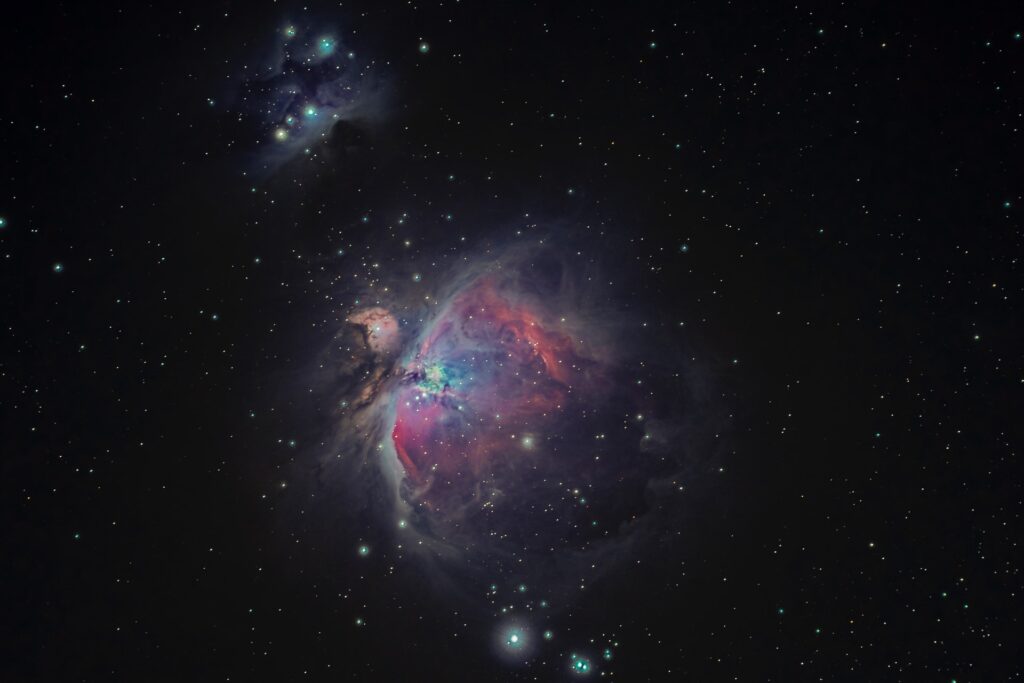Science and religion are separate tool kits for the exploration of two very different dimensions of the human experience. There is some overlap, of course, specifically in that religion and science both require that we are believers of a kind. With each, however, the implications of our belief are different.

Science is descriptive. At its best, science offers clues as to the “what” and “how” of any given mystery, but science is rarely as definitive as its public image projects. With the evolving sophistication of our instruments and methods, our bodies of evidence perpetually grow, either reinforcing previous claims, or rewriting them altogether. What we come to “know” through science is only valid in the moment, or at least until some new discovery comes along to upset our convictions. Most of us recognize the shifting quality of these “facts” and in this way, science produces a contemporary set of widely held beliefs of practicable value without requiring a lot of emotional investment.
In contrast, religion requires a tremendous amount of emotional investment because religion is one attempt to answer the “why” questions. We must construct meaning for ourselves before and through our inquiry into other matters. A grounding in purpose is foundational and the feelings associated with that purpose are what give rise to our sense of morality and ethics which we further reinforce through ritual and practice.
And while religion is much more than an emotional state, this feeling is key in our understanding of purpose. Without doubt, it’s possible to arrive at a sense of purpose purely through scientific inquiry. The data shows us that the planet is warming up, for example, and that engenders a sense of purpose connected to understanding and changing that, if possible.
But until we feel it, until we’ve internalized the “why” in a way that keeps us up at night, we haven’t really crossed over into a religious experience.
But because they each have their place in reconciling the human condition, both science and religion can feed into each other beautifully. Religious conviction inspires scientific inquiry that leads to discoveries which validates one’s sense of purpose and results in a course of action as a manifestation of one’s beliefs.
I stumbled across an article that I feel is an example of this. Whether from a purely descriptive perspective or meditated upon as a profound symbol, what has recently been learned about the darkness of space is truly fascinating.
NASA sent out a spacecraft with the New Horizons mission that sailed past the furthest planet in our solar system, Pluto, about five years ago. It’s still going and it’s still taking pictures.
But NASA has become particularly interested in the really boring pictures, the ones without stars and galaxies. NASA wants to know just how dark space really is.
If you take away all of the light from stars, all of the light reflected by planetary objects and drifting dust, all of the light streaming in from galaxies outside of our own, and you even control for camera artifacts, just how dark would space be?
. . . it turns out, once that was done, there was still plenty of unexplained light.
In fact, the amount of light coming from mysterious sources was about equal to all the light coming in from the known galaxies.
Marc Postman
The amount of light that seems to exist within the darkness of space without any obvious source, is EQUAL to the light emitted by all known sources.
That is incredible. And while science may one day describe the source of this mysterious light, for now I will bring my wonder here:
“The example of His light is like a niche within which is a lamp, the lamp is within glass, the glass as if it were a pearly [white] star lit from [the oil of] a blessed olive tree, neither of the east nor of the west, whose oil would almost glow even if untouched by fire. Light upon light.”
Q24:35
The scientific questions of “what” and “how” are still being sorted. But the more spiritual sense of “why” is already settling in for me.
The recognition of a hidden light within the darkness of the void brings layers of perspective and consolation and wonder.
You can read the full article here.
Leave a comment below for posterity or join us in the D&T Chautaqua Discord to discuss this post with other adventurous spirits from around the world.

